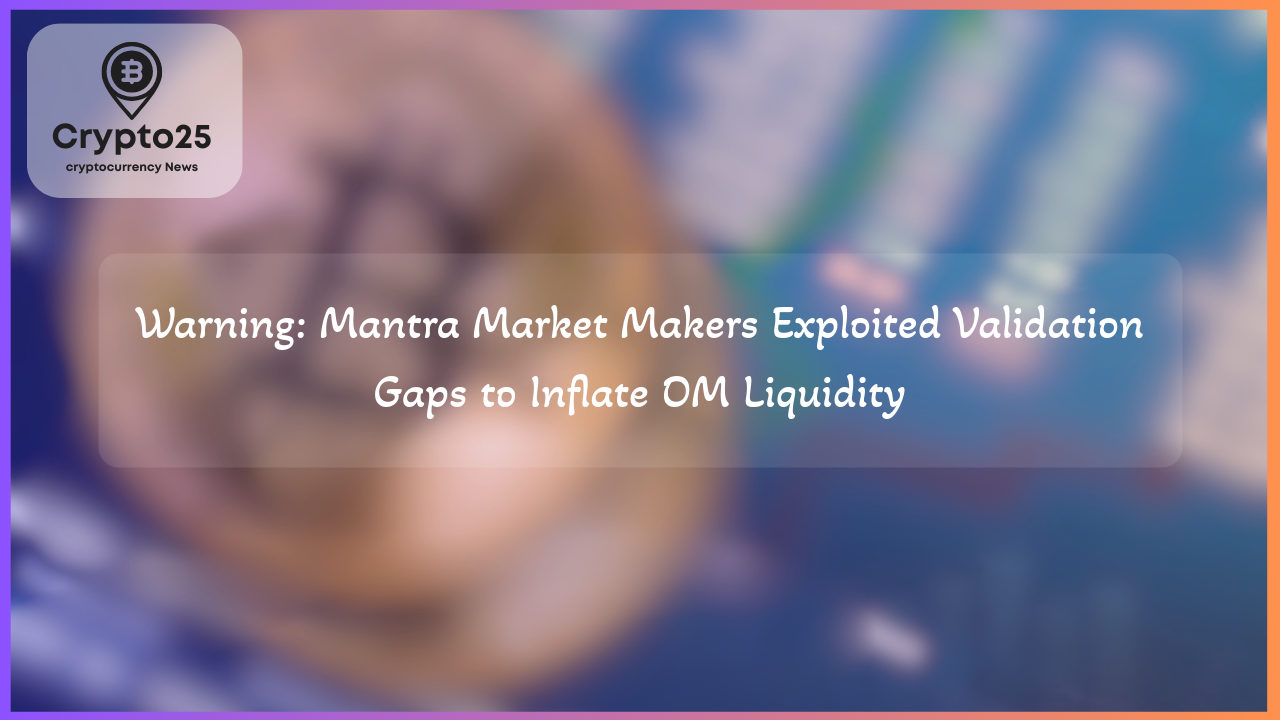
The cryptocurrency industry has seen rapid growth, attracting investors, developers, and innovators worldwide. However, incidents like the recent collapse of the OM token highlight vulnerabilities within the ecosystem, especially concerning liquidity manipulation and market transparency. By analyzing the situation surrounding Mantra and the OM token, we can uncover significant lessons for improving crypto’s integrity and earning back investor trust.
### How Liquidity Manipulation Shaped the Fate of the OM Token
The collapse of Mantra’s OM token has sparked vital conversations across the crypto community, particularly around how liquidity manipulation impacted its trajectory. Allegations surfaced during “The Chopping Block” podcast, where analysts highlighted deliberate system exploitation to inflate OM’s trading volume and market prominence.
Mantra and its associated market makers reportedly exploited vulnerabilities in self-reporting systems used by data aggregation platforms like CoinGecko and CoinMarketCap. By cycling tokens across controlled wallets and exchanges, they artificially boosted trading figures, creating the illusion of significant market activity. According to on-chain observers, while OM appeared as a top-25 cryptocurrency by market capitalization, less than 1% of its circulating supply was genuinely liquid. This discrepancy underscores the misrepresented depth of trading opportunities.
These tactics succeeded by capitalizing on gaps in validation protocols. Market aggregators primarily rely on self-reported statistics cross-referenced with exchange data, but the sophistication of fabricated liquidity can evade even these checks. When a significant OM holder attempted to liquidate, the asset’s fragility became evident. The token plummeted by 90% in just 90 minutes, wiping out billions in market value and dismantling investor trust almost instantly.
| Title | Details |
|---|---|
| Market Cap Before Collapse | $1.2 Trillion |
| Drop in Price | 90% within 90 minutes |
| Circulating Liquidity | Less than 1% |
This incident has heightened attention within the crypto space on the need for stricter reporting mechanisms that limit the opportunities for manipulation. It also emphasizes the potential dangers for retail investors navigating seemingly reputable assets.
### Addressing Liquidity Manipulation in Cryptocurrency Markets
To tackle the core issues exposed by the OM token’s collapse, industry leaders and market participants have proposed critical solutions. Among these is the suggestion to mandate full disclosures of market-making agreements. For tokens listed on prominent exchanges like Coinbase or Binance, requiring transparency about liquidity provisions, traded volume structures, and market-maker partnerships would ensure a clearer understanding of an asset’s credibility.
This approach is already practiced in traditional finance, where securities filings provide detailed information on market-making contracts for publicly traded companies. In a crypto context, transparency must be extended to rebate mechanisms, inventory management agreements, and promises of volume guarantees.
Another proposed solution involves strengthening verification standards for circulating supply claims. For instance, exchanges could adopt more stringent on-chain validation practices, such as wallet audits and wallet ownership concentration analyses. By verifying token distribution beyond the data projects self-report, platforms could identify fabricated figures and mitigate manipulation risks.
Such measures, if widely adopted, could restore confidence in liquidity metrics and reduce the prevalence of bad actors leveraging loopholes to stage credibility.
### Overcoming Potential Challenges to Implementing Solutions
While proposed solutions represent a step forward, certain obstacles remain in implementing them effectively. Market makers may resist disclosing proprietary agreements, arguing that these contracts form the backbone of their competitive advantage. Additionally, cryptocurrency exchanges may face increased operational costs when upgrading validation mechanisms, potentially creating resistance among stakeholders.
Another central issue is the lack of regulatory clarity. Without unified global standards, uneven enforcement across jurisdictions could lead to varying levels of compliance. This disparity may encourage bad actors to shift operations to platforms with more lenient practices, perpetuating the cycle of manipulation.
Despite these challenges, coordinated action among major exchanges could make significant strides in addressing the issue. If industry-leading platforms standardize transparency requirements for new listings, projects seeking legitimacy would be incentivized to comply. Over time, such an initiative could reduce reliance on fabricated metrics and enhance overall market stability.
### Lessons Learned from the OM Token Collapse
The OM token collapse serves as a cautionary tale for the entire crypto ecosystem, reminding us of the importance of transparent liquidity practices and robust validation standards. For investors, it highlights the need for vigilance when assessing the credibility of tokens, particularly those reporting high volumes without independent verification.
For the industry at large, it offers a pathway to strengthen its reputation and ensure long-term sustainability. By addressing shortcomings in self-reporting systems, promoting market-maker transparency, and standardizing validation practices, the crypto landscape can move closer to its ultimate goal of democratized finance driven by trust and accountability.
